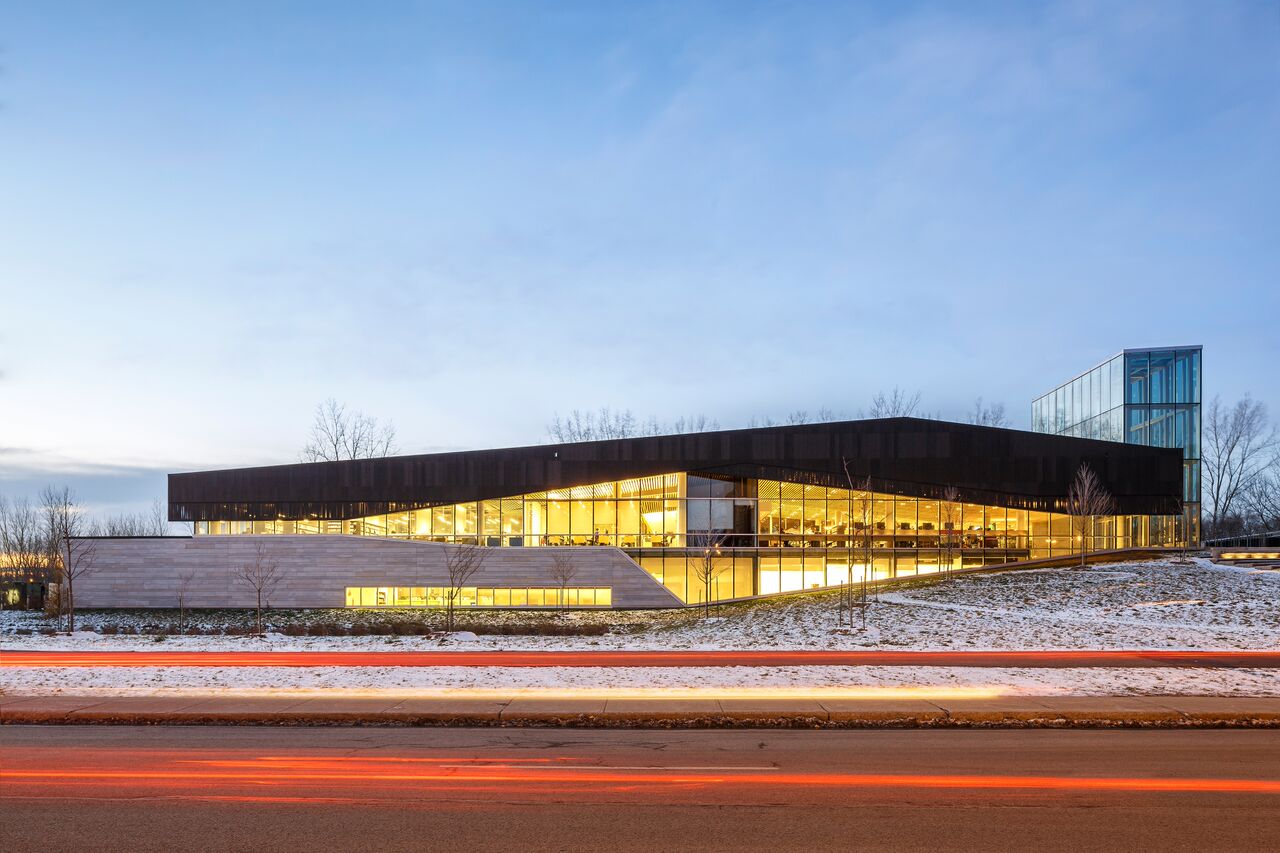by Brianna Crandall — May 8, 2017 — A public library in suburban Montreal that combines high-performance standards with design quality and responsiveness to community needs will receive the 2017 Green Building Award. Presented by the Royal Architectural Institute of Canada (RAIC) and the Canada Green Building Council (CaGBC), the award recognizes outstanding achievement in buildings that are environmentally responsible and promote the health and well-being of users.
The Bibliothèque du Boisé in Montreal’s Saint-Laurent borough, inaugurated in 2013, was designed by Cardinal Hardy | Labonté Marcil | Eric Pelletier architecte in consortium.
The three-member jury commented:
The library offers a variety of beautifully lit and welcoming spaces throughout, maximizing daylight and views and the use of natural elements, such as wood, to create an environment that contributes to health and wellbeing. Their approach to high-performance building through whole systems design and strategy has resulted in an impressive achievement. Not only does it have a remarkable dialogue with the urban site and natural habitat, but it also does so with a striking form.
Winner of multiple national and international awards, the LEED Platinum-certified building covers 6,000 square meters and brings together multiple functions: a library, administration, exhibit space and museum archives.

6,000-square-meter LEED Platinum-certified building serves multiple functions: a library, administration, exhibit space and museum archives. In addition to a large collection to serve an ethnically diverse area, it includes meeting rooms, youth areas, and a café, and an attractive space for community activities.
The result of an architectural competition by the City of Montreal, the library contains a large collection to serve an ethnically diverse area. It includes meeting rooms, youth areas, and a café, and aims to provide an attractive space for learning and cultural and community activities. Tech-savvy services include Wi-Fi Internet access; computer workstations; loan of tablet computers (for use inside the library); and loan of CDs, DVDs, Blu-Rays and video games.
Sustainability strategies
Sustainability strategies include an innovative integration of mechanical systems: a passive heating system uses the heat accumulated in a glass prism for redistribution through a geothermal loop. Low-flow ventilation through the floors reduces the number of ducts required.

Sustainability strategies include a passive heating system using heat accumulated in a glass prism for redistribution through a geothermal loop; low-flow ventilation through floors for a reduced number of ducts; natural light for 75% percent of floor area; use of certified wood, low-emitting materials, recycled or regional materials.
The building relies mostly on natural light, combined with task lighting, for energy savings: 75 percent of the library’s floor area receives natural light. The project emphasized the use of certified wood, low-emitting materials, and recycled or regional materials.
Exterior
The exterior of the building features white elastomer roofing and green roofs, LED lighting for the parking lot, and four parking spaces for electric vehicles and two for Communauto.
On the grounds, the project preserved trees and planted over 100 new ones, as well as adding 5,000 shrubs, ground cover, and climbing plants, all of them indigenous. A stormwater recovery system supplies water to an adjacent wetland.
The award will be presented at the RAIC/OAA Festival of Architecture, which takes place May 24 to 27 in Ottawa.




